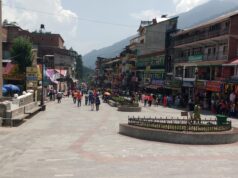The sunny beaches of Spain are a refuge for tourists from all over the world. However, authorities have been forced to close several of the nation’s most visited tourist destinations due to a recent invasion of deadly sea critters. Due to the presence of “blue dragons,” also known as Glaucus atlanticus, the stunning beaches of Guardamar del Segura, which are situated in the southeast of Alicante (Costa Blanca), have been closed. Despite their seemingly innocuous appearance, these tiny, glistening blue sea slugs may cause severe pain, nausea, and allergic reactions when they sting.
“Due to the appearance of the blue dragon (Glaucus atlanticus), and for motives of citizen safety, we have banned all swimming on all of the municipal beaches until a new order,” the Guardamar police force stated in a Facebook post.
They continued, “We urge neighbours and visitors to respect the directions, exercise caution and avoid direct contact with specimens that may appear in the sand.”
Jose Luis Saez, the mayor of Guardamar del Segura, asked people to report any sightings of the poisonous blue dragon sea slugs and to keep their hands away from them, even if they are wearing gloves. He suggests getting medical help and washing the stinging area with seawater.
A blue dragon: what is it?
The blue dragon, so named because of its legendary likeness, is a little animal that is around 3 centimeters (1.2 inches) long. Because it has concentrated the venom of venomous creatures, such as the Portuguese man o’ war, it can sting with great force despite its diminutive size. This enables it to immobilize prey that is far bigger than it.
In the Mediterranean, blue dragons are somewhat rare. They are usually found in the Atlantic, Pacific, and Indian Oceans’ temperate and tropical seas, where they are moved by wind and ocean currents.
More about the Costa Blanca in Spain
The Costa Blanca, or White Coast, is the name given to the Mediterranean coastline that encircles Alicante. The well-established tourism sector, varied beaches, and agreeable climate of this 200-kilometer stretch of the Mediterranean coast in southeast Spain have made it attractive.
From the hamlet of Denia in the north to Pilar de la Horadada in the south, this White Coast offers a range of sceneries, from rocky cliffs and mountains to sandy beaches and coves. The cities of Alicante, Benidorm, and Denia are important stops along the Costa Blanca.







